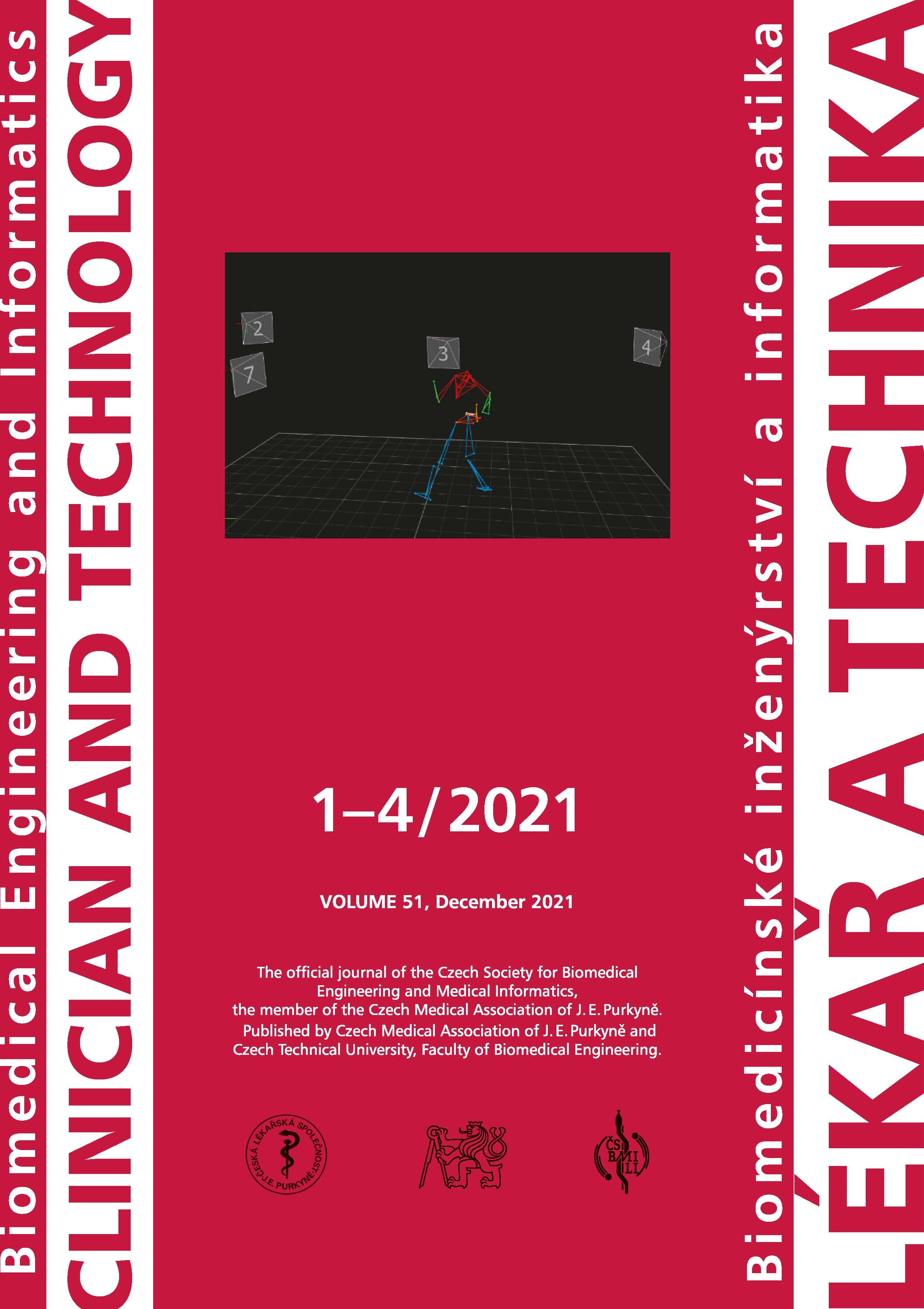BUNDLE BRANCH BLOCKS SIMULATIONS IN VENTRICULAR MODEL WITH REALISTIC GEOMETRY AND CONDUCTION SYSTEM
DOI:
https://doi.org/10.14311/CTJ.2021.1.03Abstract
The goal of the study was to design a model of cardiac ventricles with realistic geometry that enables simulation of the ventricular activation with normal conduction system functions, as well as with bundle branch blocks. In ventricles, electrical activation propagates from the His bundle to the left and right bundle branches and continues to the fascicles and branching fibers of the Purkinje system. The role of these parts of the conduction system is to lead the activation rapidly and synchronously to the left and right ventricle. The velocity of propagation in the conduction system is several times higher than in the surrounding ventricular myocardium. If the conduction system works normally, QRS duration representing the total activation time of the ventricles lies in the physiological range of about 80 to 120 ms but it is more than 120 ms in the case of bundle branch blocks. In our study, the realistic geometry of the ventricles was constructed on the base of a patient CT scan, defining epicardial and endocardial surfaces. The first part of the conduction system (fast-conducting bundle branches, fascicles in the left ventricle and initial parts of the Purkinje fibers) was modeled as polyline pathways isolated from the surrounding ventricular tissue. The remaining part of the Purkinje system was modeled as an endocardial layer with higher conduction velocity. The propagation of the electrical activation in the ventricular model was modeled using reaction-diffusion (RD) equations, except for the first part of the conduction system, where the activation times were evaluated algebraically with respect to predefined velocity of propagation and estimated distance between the His bundle and particular entry point to the layer with higher conduction velocity. Propagation of activation in cardiac ventricles was numerically solved in Comsol Multiphysics environment. Several configurations of the first part of the conduction system with different number of polyline pathways and entry points were proposed and tested to achieve realistic activation propagation. For the model with 9 starting points, realistic total activation time (TAT) of the whole ventricles of about 108 ms was obtained for the model with normal conduction system, and realistic TAT of 126 ms and 149 ms were obtained for the right and left bundle branch block (RBBB, LBBB), respectively. Very similar TAT was found also for the model with 7 starting points, but unrealistically long TAT was obtained in LBBB simulation for the model with only 5 starting points.
Downloads
Published
Issue
Section
License
Copyright (c) 2022 Elena Cocherová, Jana Švehlíková, Milan Tyšler

This work is licensed under a Creative Commons Attribution 4.0 International License.
Authors who publish with this journal agree to the following terms:
- Authors retain copyright and grant the journal right of the first publication with the work simultaneously licensed under a Creative Commons Attribution License (https://creativecommons.org/licenses/by/4.0/) that allows others to share the work with an acknowledgment of the work's authorship and initial publication in CTJ.
- Authors are able to enter into separate, additional contractual arrangements for the non-exclusive distribution of the journal’s published version of the work (e.g., post it to an institutional repository or publish it in a book), with an acknowledgment of its initial publication in this journal.
- Authors are permitted and encouraged to post their work online (e.g., in institutional repositories or on their website or ResearchGate) prior to and during the submission process, as it can lead to productive exchanges.
CTJ requires that all of the content of the manuscript has been created by its respective authors or that permission to use a copyrighted material has been obtained by the authors before submitting the manuscript to CTJ. CTJ requires that authors have not used any copyrighted material illegally, as for example a picture from another journal or book, a photo, etc. It is the author’s responsibility to use only materials not violating the copyright law. When in doubt, CTJ may ask the authors to supply the pertinent permission or agreement about the use of a copyrighted material.
The opinions expressed in CTJ articles are those of authors and do not necessarily reflect the views of the publishers or the Czech Society for Biomedical Engineering and Medical Informatics.


